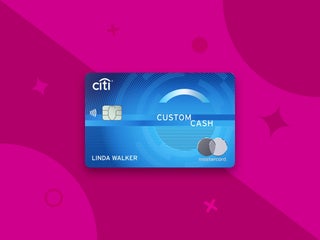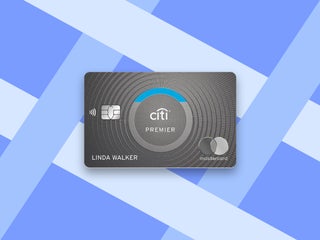Summary
The Citi Diamond Preferred requires at least a good credit score. However, if your application is denied, there are a few steps you can take to improve your score.
The content on this page is accurate as of the posting date; however, some of our partner offers may have expired. Please review our list of best credit cards, or use our CardMatch™ tool to find cards matched to your needs.
Citi is a CreditCards.com advertising partner.
The Citi® Diamond Preferred® Card is a great option for paying off debt, and it comes with no annual fee. With a 21-month 0 percent introductory APR offer on balance transfers (after that, a regular APR of 17.49 percent to 28.24 percent variable), it’s one of the best balance transfer cards on the market.
If you want to pay down your credit card debt with the Citi Diamond Preferred Card, you’ll first need to apply. Of course, before you apply, you should know whether you have a chance of getting approved. Read on to learn about the credit score and other factors you’ll most likely need to qualify for this popular balance transfer card.
What credit score do I need to get the Citi Diamond Preferred card?
The Citi Diamond Preferred Card is for consumers with a FICO credit score in the good to excellent range. In other words, you will need a score from 670 to 850.
While it is possible to be approved with a good credit score (670 to 739), your score will also affect what your regular APR will be after the intro APR period ends. If you are concerned at all about the higher APR rates, you should consider working on your credit score before applying, especially now that average credit card interest rates are reaching record highs. Now is one of the worst times to rack up credit debt, with interest rates as high as they are, across the board.
An excellent credit score will make it easier to qualify for the card and may get you an APR on the lower end of the card’s range.
What can I do if Citi declines my application?
If your Citi Diamond Preferred card application is denied, you have a few options.
If denied, you can ask Citi directly why your application was declined. The issuer is required to provide this information, and it will give you insight into what you should do next. While your credit score is one component of a card application, lenders do consider other factors. For example, you could be denied because you accidentally entered your address incorrectly on the application, or because your income level is too low and the issuer is not confident you would be able to make your monthly payments.
If nothing is amiss on your application, you can also check your credit report — and if your credit report contains errors, you can open a dispute to fix them. Every 12 months, you can get a free copy of your credit report from all three national credit bureaus via AnnualCreditReport.com.
If after those steps you still don’t qualify for the Citi Diamond Preferred, Citi has other card options that could be better suited to your needs. If you want a card with an introductory period on balance transfers but are also interested in getting cash back, the Citi® Double Cash Card may be for you. This card is a solid flat-rate cash back card, offering up to 2 percent cash back (1 percent when you charge purchases and an additional 1 percent as you make payments for those purchases), with an 18-month 0 percent intro APR on balance transfers (followed by 18.49 percent to 28.49 percent variable APR).
However, before applying or reapplying for a card, you should take the time to review your credit score and work on improving it, if it’s not where you need it to be. The best thing you can do is be honest with yourself and start building up your credit rather than lower your score even further with repeated hard inquiries, which occur every time you apply for a new credit card.
How can I improve my score to get this card?
Understanding how your credit score is calculated makes it easier to improve it. Your credit score is based on five factors: payment history, credit utilization, length of credit history, new credit lines and credit mix. Each makes up a different percentage of your overall credit score, making it easy to prioritize what needs the most improvement.
The largest impact on your credit score is payment history. In fact, it makes up 35 percent of your total FICO score. Making consistent, on-time payments for all your loans and credit cards is the best way to improve your credit score. If a payment is 30 days or more past the due date, it can substantially lower your score. Consistency is key here, too, because you need a long-term history of on-time payments to build and sustain a good credit score.
Credit utilization contributes 30 percent to of your credit score, making it the second most important factor behind payment history. Keeping your credit utilization ratio low demonstrates good credit management to lenders and will improve your score. You can calculate your credit utilization ratio by dividing your current balances by your overall credit limit. It is often suggested to keep revolving utilization below 30 percent but try to keep it as low as possible is best. As you pay down balances your credit utilization decreases, which is why it’s always best to pay your bills all at once.
There are a few other things that improve your score, such as having longer credit history, diversifying credit types and avoiding applying for or opening multiple new accounts in a short time period. If you’re starting with a bad credit score, it will likely take some work and patience to get a score that will land you the Citi Diamond Preferred. But if you already have a fair or good score, a little extra attention to your credit habits could boost you to a good to excellent score before you know it.
Bottom line
The Citi Diamond Preferred Card is a great card for someone seriously looking to pay down debt. To be approved for this card, you will need a FICO score in the good to excellent range. If your score is already in that range and you know you can pay off your bills within its 21-month intro period, the card could be worth it for you. If you’re not there yet, a simple first step is to consistently make on-time payments on existing cards and loans to help build your score.
Editorial Disclaimer
The editorial content on this page is based solely on the objective assessment of our writers and is not driven by advertising dollars. It has not been provided or commissioned by the credit card issuers. However, we may receive compensation when you click on links to products from our partners.





